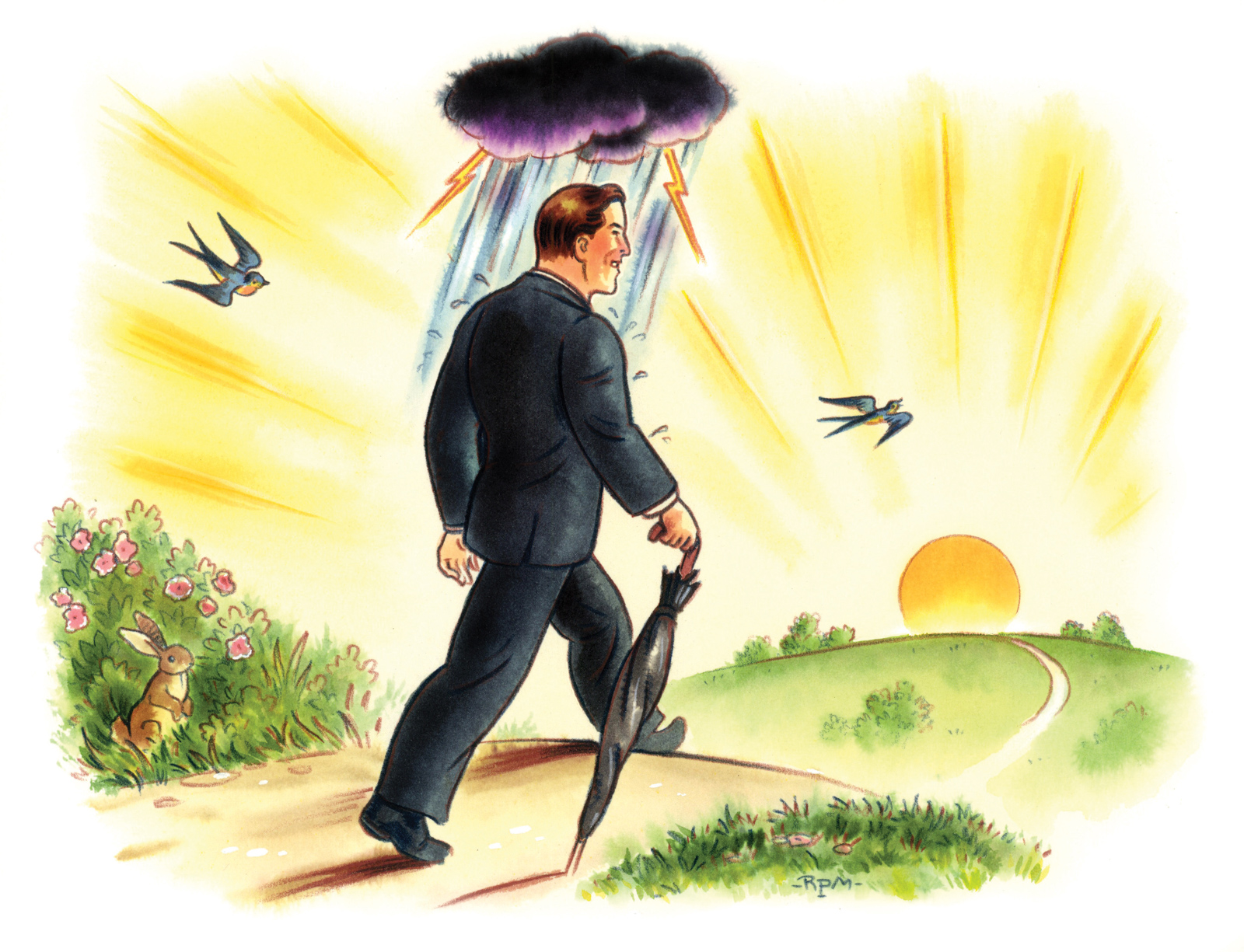
The 8th-century Indian Buddhist sage Shantideva dedicated a chapter of his work The Way of the Bodhisattva to the subject of patience. In the new book Peaceful Heart: The Buddhist Practice of Patience, the Tibetan Buddhist teacher Dzigar Kongtrul Rinpoche follows the 134 verses from the Patience Chapter and explains how they apply to our busy lives today. In this excerpt, he discusses verses 15 through 18, translated by the Padmakara Translation Group.
15
And do I not already bear with the
common irritations—
Bites and stings of snakes and flies,
Experiences of hunger and thirst,
And painful rashes on my skin?
16
Heat and cold, the wind and rain,
Sickness, prison, beatings—
I’ll not fret about such things.
To do so only aggravates my trouble.
If we look at our lives, we already have a certain amount of patience. We can bear many difficult circumstances quite well. For example, we all have to endure minor illnesses such as colds and headaches. We have to deal with plenty of weather we don’t like. We put up with mosquitoes and mice and many other creatures that cause us minor trouble.
Rather than constantly seeking to eliminate all small irritations from our lives, we can use them as a basis for developing more patience. If you emphasize comfort over the practice of patience, your mind will get weaker and weaker. If you want your life to be free of the challenge of needing patience, your mind will be in constant fear. You will feel increasingly under threat, increasingly provoked, increasingly paranoid. This will lead you to act more negatively and to reject much of the world.
Practitioners need to be going in the opposite direction. We need to have a little oomph to work with all the challenges we encounter. A lot of people wonder, “Why does my life have so much struggle?” But there is no such thing in samsara as a life free of struggle. There is no such thing as a life where nothing threatens us. So instead we should ask ourselves, “Why doesn’t my life have more oomph?”
It’s interesting that it’s easier to be patient with things or beings that cannot be held responsible, such as the weather or infants. We should also notice that it’s relatively easy to muster our tolerance toward people we want to please or impress, such as those we find attractive or our superiors at work. These examples show how capable we are of having control over our minds. If we use these easier situations as a training ground, we are also capable of extending our patience to situations or people that tend to provoke our anger more strongly.
Shantideva’s point here is that developing patience depends a lot on our self-confidence and self-image. If we see ourselves as nervous, shaky, and irritable, our experiences will tend to follow that image. So we need to change our attitude to see ourselves as tolerant and not easily disturbed. This will make a great difference in how we react to outer conditions and will set in motion more favorable ways for things to unfold. When we see ourselves in such a positive light, it will be easy to tolerate small disturbances, let go, and move on with ever-increasing patience. As our minds become more agile and ready to make use of discomfort and adversity, we will gain more strength to face the great disturbances of life with tolerance.
17
There are some whose bravery
increases
At the sight of their own blood,
While some lose all their strength
and faint
When it’s another’s blood they see!
18
This results from how the mind is set,
In steadfastness or cowardice.
And so I’ll scorn all injury,
And hardships I will disregard!
Our reactions to situations, people, and our own states of mind are based on how we condition our minds. For instance, if you have habituated yourself to be brave in battle, seeing your own blood flow may give you even more courage to fight. But if you’ve habituated your mind to weakness and oversensitivity, you may faint or panic even when you see someone else’s blood. Your response in that moment comes from how you’ve built up your habits in the past.
You can train your mind to be strong and resilient, or you can train your mind to be fainthearted and easily discouraged. This is your choice. If you want to be a bodhisattva, it’s not viable to act like a weak dog and run away with your tail between your legs, succumbing to your habitual reactions. A bodhisattva needs to endure countless challenges, so you have to shed any tendencies toward cowardice.
In these modern times, particularly in the West, it’s common for people to give up on themselves easily. Many dharma students tend to judge themselves too harshly and then become discouraged. Part of the problem is they want to be too good. So when they see their neuroses and their imperfections, they have a hard time accepting themselves. This comes from having unreasonable expectations. It is a puritanical mindset. I hear people say, “I’ve been practicing for the last twenty years. How could this happen? How could I do this? How could I have this thought, this feeling?” This often happens just when they think they’ve made some progress. The result can be deep despondency.

Our thoughts, feelings, and reactions come about due to a vast number of interdependent circumstances. When the perfect circumstances converge for you to have a particular reaction, it’s almost impossible not to have that reaction, at least initially. As a result, no matter how long you’ve practiced, it’s very unlikely that nothing will bother you anymore. It isn’t realistic to think you’ll be exempt from getting frustrated or losing your temper. The mark of a true practitioner is not what arises in your life and mind, but how you work with what arises.
It all comes down to your perspective and your self-confidence—your oomph. Now you may think, “What can I do about that? I’m just not a self-confident person.” It’s important to know that self-confidence isn’t something we’re born with. Everyone can develop self-confidence if they want to. But we must understand that here we are talking about genuine self-confidence, not ego’s bloated version, which is more like arrogance.
The process begins with your willingness to take a chance. Rather than having everything absolutely clear and predictable ahead of time, you have to be willing to go into the unknown. This may require a leap of faith—faith in your own mind and its innate wisdom and ability. Then, having taken that leap, you have to work with your intelligence—skillfully, mindfully, and patiently—as the situation unfolds. Going through this kind of process repeatedly will increase your self-confidence, especially when you encounter difficulties and find ways to turn them around or bring about the best outcome possible.
Here it is helpful to remember verses 15 and 16, in which Shantideva advises us to train ourselves in cultivating positive qualities by beginning with relatively small things. This is a realistic, doable approach to developing any desirable attribute in your mind. For example, you may wish to be a generous person but realize that you’re not very generous. Resigning yourself to being stingy by nature will get you nowhere. That is just making an excuse based on laziness.
If you’re genuinely interested, you can always find small ways to be generous. You can even practice by passing money or some object you’re attached to from one of your hands to the other. The Buddha actually suggested this simple practice to a disciple who thus got over his miserliness and eventually became a great patron of the dharma. Starting small will serve as an effective beginning to your generosity practice, which you can then take as far as you want it to go.
With patience especially, we can use the small irritations that come up in our lives as wonderful opportunities to train. For example, sometimes we feel offended, but at the same time we realize it’s silly to be offended. Here we have a great chance to apply the humor we already see in the situation. This humor is based on realizing the irony of what is happening: we’re blaming somebody else, but the real problem is our own ego, manifesting in the form of a ridiculous uptightness. This kind of ironic humor is not just a patch we use to cover up pain. It is an insight that can turn irritation into a genuine laugh or smile, which gives us a feeling of release. A humorous perspective gets us through the slight pain of the offense and enables us to turn that pain into wisdom. We can then appreciate the pain as we would the pain of an immunization. We need to take advantage of these situations, which are within our reach to work with successfully. If we forgo such opportunities to practice in small ways, then to believe we will be patient when bigger things come around is just wishful thinking.
Because humor and appreciating irony are such effective means of cutting through irritations, I would like to share a contemplation I once had, which I found both funny and helpful. It occurred to me that people come with different shoe sizes, but that doesn’t bother me. They have different pants sizes and hat sizes. That also doesn’t bother me. So why should I be bothered that people come with different sizes of ego? Just as I don’t have to wear other people’s shoes, I don’t have to wear other people’s egos. I can just let them wear their own egos, whatever size they are. Why should I take the size of someone else’s ego personally and let it bother me? It is theirs and theirs alone to wear. I can just let them be.
The size of another person’s ego can make you feel very bothered and uncomfortable. But if you can find other ways of looking at your irritation, especially using humor, then you have a better chance of being patient. In this way, your patience will increase not only in trivial situations but also in serious situations where humor and irony are more difficult to find.
♦
Excerpted from Peaceful Heart: The Buddhist Practice of Patience by Dzigar Kongtrul © 2020. Reprinted with permission of Shambhala Publications.
The post The Path of Patience appeared first on Tricycle: The Buddhist Review.
from Teachings – Tricycle: The Buddhist Review
https://tricycle.org/magazine/dzigar-kongtrul-patience/
from https://tricycle.org
#buddhist #buddhism
No comments:
Post a Comment